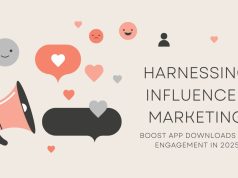In 2025, user-generated content (UGC) is more influential than ever in shaping app discovery and user loyalty. As users increasingly trust peer reviews and real-life experiences over brand messaging, integrating UGC into your app marketing strategy can skyrocket your growth. From social media shares to in-app galleries, UGC drives authenticity and fosters community. In this guide, we’ll explore proven tactics to encourage, curate, and amplify user content, measure its impact, and avoid common pitfalls. By the end, you’ll have a step-by-step blueprint for harnessing the full potential of UGC to boost downloads, retention, and engagement for your app.
Why User-Generated Content Matters Now
In an era of ad fatigue and increasing privacy concerns, traditional marketing channels are losing their edge. UGC bridges the gap between brands and consumers by offering candid, relatable experiences. When real users share tips, reviews, or creative uses of your app, prospects perceive higher credibility. Studies show that UGC-based ads see 4x higher click-through rates and 50% lower cost-per-acquisition compared to branded content. Moreover, featuring UGC in your app stores, email newsletters, and social feeds can significantly uplift conversion rates and organic referrals, as new users trust peer validation over polished ad copy.

In-App Campaigns to Encourage UGC
The first step to a successful UGC engine is to create seamless in-app experiences that prompt users to contribute. Consider integrating an in-app gallery or community wall where users can upload screenshots, reviews, or video clips directly from their activity. Use contextual prompts—such as asking for tips after completing a milestone or requesting a quick review post-purchase. Keep the upload flow frictionless: minimize required fields, allow single-tap uploads, and provide in-app editing tools. By embedding UGC capture points into your core user journey, you ensure a steady stream of fresh content without disrupting engagement.
Leveraging Social Media and Hashtag Challenges
Social platforms are natural amplifiers for UGC. Launch hashtag campaigns on Instagram, TikTok, and Twitter to encourage users to share their experiences outside your app. Create a unique, memorable hashtag and offer templates or branded frames users can overlay on their photos. Collaborate with micro-influencers to seed initial content and drive participation. Promote top submissions on your official channels, giving credit to contributors. This not only rewards active users but also motivates others to join. Monitor frequently used hashtags and repurpose high-performing posts in your paid media to build social proof and drive app installs.

Incentivization and Gamification Techniques
Rewards and game mechanics can accelerate user participation in UGC campaigns. Implement point systems, badges, or leaderboards tied to content uploads. For example, award points for every video review or curated tip, and unlock exclusive features once users reach specific thresholds. Host time-bound contests with attractive prizes—such as premium subscriptions, in-app currency, or physical merchandise—to generate excitement. Ensure transparency by clearly outlining contest rules and judging criteria. Gamification not only boosts content volume but also strengthens brand loyalty as users strive to climb ranks and earn recognition.
Measuring and Analyzing UGC Impact
To optimize your UGC strategy, track both quantitative and qualitative metrics. Key performance indicators include: number of submissions, engagement rates on UGC posts (likes, shares, comments), click-through and conversion rates when featuring UGC in ads, and uplifts in organic installs. Use UTM parameters and custom event tracking within your analytics platform to attribute downloads and in-app actions to specific UGC campaigns. Supplement this with sentiment analysis and content quality grading to identify top-performing formats and themes. Regularly iterate based on insights—double down on high-engagement content types and phase out less effective initiatives.
Case Study: A Lifestyle App’s UGC Success
Take the example of FitLife, a wellness app that integrated UGC into its growth playbook. By launching a #MyFitLifeChallenge on TikTok, they encouraged users to post daily workout clips using in-app filters. Over 6 weeks, they amassed 15,000 user videos, increasing organic installs by 30% and reducing cost-per-install by 45% on social ads featuring top submissions. FitLife also embedded a rotating “User Spotlight” carousel on its home screen, which boosted daily active users by 20%. Their success underscores the power of authentic content and social proof in driving exponential growth.
Best Practices and Common Pitfalls
To maximize UGC benefits, follow these best practices: ensure clear content guidelines to maintain brand safety; obtain explicit permissions for reuse; curate and moderate submissions to uphold quality; and maintain a consistent brand voice when showcasing user stories. Beware of over-incentivizing low-quality posts purely for volume—prioritize quality over quantity. Avoid legal issues by providing simple opt-in/out mechanisms and crediting creators properly. Finally, don’t neglect diversity: feature a wide range of voices and use cases to appeal to broader audiences.

Conclusion
User-generated content offers an unparalleled avenue to build trust, foster community, and drive sustainable app growth in 2025. By embedding UGC capture points in your app, leveraging social media challenges, and applying gamification, you can unlock authentic brand ambassadors and amplify your reach. Continuously measure impact, refine your tactics, and adhere to best practices to maintain quality and legal compliance. Start implementing these strategies today to harness the full power of UGC and propel your app marketing to new heights.







